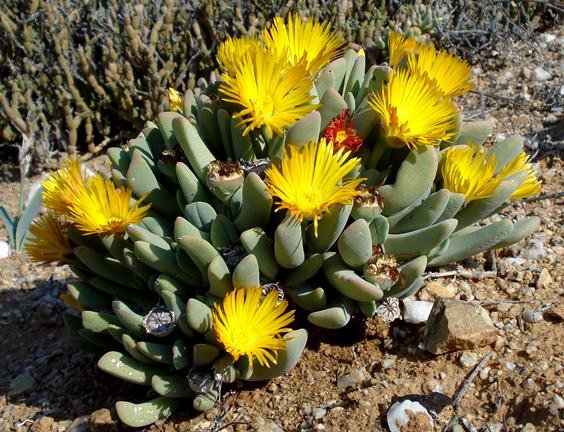Cheiridopsis robusta

Author: Ivan Lätti
Photographer: Judd Kirkel Welwitch
Cheiridopsis robusta is a strong-growing, variable leaf-succulent that forms small clumps or mats. Each branch produces one or two pairs of leaves. When two the one pair is usually smaller, depending on the moisture transfer from old leaves to new ones. The stems are short, the internodes hidden.
Young leaves emerge during the winter rainy season, enveloped in papery sleeves of retained old leaf skins. The longish, succulent leaves are deep-keeled, triangular in cross-section, the keel tip rounded. The upper surfaces of the young leaves are positioned against each other, smaller than the keel flanks. The leaf-pairs are joined only at the base, the bluish to grey-green leaf surfaces smooth.
The yellow flowers in picture grow solitary from the leaf-pair gap on short pedicels just above the leaf-tips. They fade orange. Flower colours also include cream or salmon, sometimes with a paler centre. The narrowly oblong petals grow in slightly more than one row or ring, tapering to acutely pointed tips. Flower diameter is nearly 6 cm. Flowers open in daylight. Flowering happens late in winter to early in spring.
The species distribution is in the northwest of the Northern Cape in the Richtersveld as far south as Kamieskroon, also in southern Namibia.
The habitat is sandy flats. The species is not considered to be threatened in its habitat early in the twenty first century (Frandsen, 2017; http://llifle.com; https://digitalcollections.lib.uct.ac.za; http://redlist.sanbi.org).

